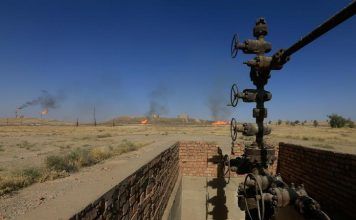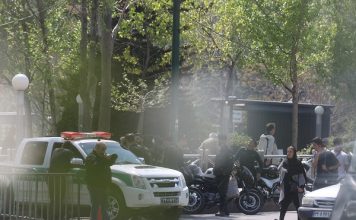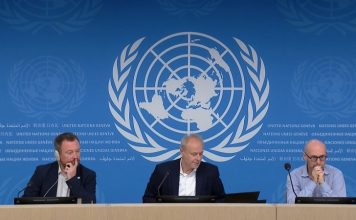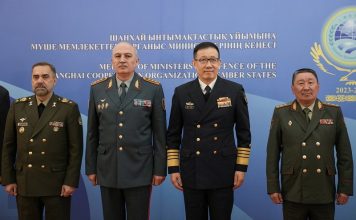By Ahmad Rafat
The Islamic State-Khorasan Province (IS-KP), also known as ISIS Khorasan or ISIS-K, has made global headlines since the terrorist attack on the concert hall in Krasnogorsk, near Moscow, which killed 143 people and injured 360 others.
Russia Arrests Suspected Gunmen as Concert Toll Soars to 115
U.S. and Islamic Republic security agencies reportedly warned the Kremlin in advance of a potential terrorist attack by ISIS-K on Russian territory.
ISIS-K is an offshoot of the Islamic State — also known as the Islamic State of Iraq and Syria (ISIS), or Daesh (its Arabic acronym). ISIS-K was established in Afghanistan in 2015, and has been responsible for more than 100 terrorist acts, including high-profile attacks that have garnered international attention and posed a threat to security in the region.
EXCLUSIVE – Iran Alerted Russia to Security Threat Before Moscow Attack, Sources Say
Another deadly attack by ISIS-K took place in January in the province of Kerman in southeastern Iran, on the fourth anniversary of the death of Lieutenant General Ghasem Soleimani, the former commander of the Islamic Revolutionary Guards Corps Qods Force (IRGC-QF).
The attack left 100 people dead as well as 200 injured. General Soleimani’s family, senior IRGC commanders, and the country’s top officials were conspicuously absent from the commemoration, prompting some to suspect that elements of the IRGC security apparatus have been maintaining longstanding ties with ISIS-K.
Despite ISIS-K’s hostility towards the Islamic Republic and towards Shias, there have been instances of cooperation between Tehran and the group. Most notably, the Islamic Republic still harbors Al-Qaeda leaders, who are influential figures within ISIS.
Prior to the Crocus City Hall terrorist attack in Russia, the group had already claimed responsibility for two other major incidents.
In 2021, ISIS-K conducted a devastating attack at Kabul airport in Afghanistan, resulting in the deaths of 13 U.S. soldiers and approximately 170 civilians. This incident highlighted the group’s capacity for large-scale violence and its ability to target high-security locations.
The Kerman bombing was the second major attack staged by the group. The more than 100 deaths that resulted underscored the group’s transnational reach and impact.
Sanaullah Ghafari, the current leader of ISIS-K, is a 29-year-old former student of Kabul University. He is from the Kharoti Pashtun tribe and was initially associated with the Haqqani Network before joining ISIS-K at its inception. In 2020, he became the seventh leader of the terrorist organization, operating under the alias Shahab al-Muhajir.
The American government has placed a bounty of $10 million on Sanaullah Ghafari. This significant reward underscores the threat that ISIS-K poses to regional security. General Michael E. Kurilla, the commander of the United States Central Command (CENTCOM), has identified ISIS-K as a significant challenge during a US congressional hearing. He has characterized the group as a growing force that demands attention and action.
In France, the security forces are deeply concerned about potential terrorist operations by ISIS and ISIS-K during the summer Olympics, which begin in Paris on July 26. These concerns stem from the recent presence and activities in France of individuals affiliated with these terrorist organizations.
In February, the French security forces made a significant arrest involving a Tajik national who was reportedly affiliated with ISIS-K. This individual had allegedly traveled to France to lay the groundwork for multiple terrorist attacks. The arrest underscores the ongoing threat posed by extremist groups like ISIS and its affiliates in France.
ISIS-K, known initially as “Khorasan Shoura” or Khorasan Council, emerged in 2015 in the border region between Pakistan and Afghanistan, specifically in the Federally Administrated Tribal Area (FATA). The group was founded under the leadership of Hafiz Saeed Khan.
Two years later, the group rebranded itself as The Islamic State-Khorasan Province and moved its headquarters to Afghanistan. The group has been targeted by U.S. airstrikes and by the Taliban, and several of its leaders have been eliminated.
According to various intelligence services, ISIS-K currently has between 3,000 and 4,000 members. There are also sleeper agents around the world associated with ISIS-K, estimated to number from 1,000 to 2,000. These sleeper agents are referred to as “wolves” by ISIS-K and are present across different countries.
The terrorist activities of ISIS-K are primarily concentrated in the region they have designated as Khorasan. Yet there have been multiple indications that the group is expanding its reach. ISIS-K’s March terrorist in Moscow is by no means its first against Russian interests: The group attacked the Russian embassy in Kabul in 2022.
According to the Armed Conflict Location and Event Data Project (ACLED), a non-governmental organization that tracks and analyzes conflict data globally, ever since the Taliban came to power in Afghanistan, ISIS-K members have engaged in 207 armed clashes with Taliban forces across 14 out of the country’s 34 provinces.
ISIS-K has accused the Taliban Islamist government of Afghanistan of confining Islam within the geographical boundaries of Afghanistan, when Islam should transcend national borders, and be a universal faith that unites believers worldwide.

ISIS-K also criticizes the Taliban for recognizing international institutions such as the United Nations, viewing this as a “betrayal of Islamic principles.” The group perceives the acceptance of “the existing world order” by the Taliban as “betraying true Islamic values,” and believes that Islam should not align itself with secular or non-Islamic entities.
According to Taliban security officials, a significant majority, precisely 90 percent, of ISIS-K members are Tajik nationals. Individuals arrested during the recent assault on Crocus City Hall and those implicated in the attack in Kerman Province have been unequivocally identified as Tajiks. Among them are ethnic Tajiks living in Afghanistan, but many others are citizens of the Republic of Tajikistan.
Tajikistan’s history is intertwined with extremism. During the 1990s, it experienced a form of civil war with radical Islamists. With a population of 10 million, Tajikistan is the most economically disadvantaged country among the former Soviet Union republics in Central Asia. Roughly a million of its residents have migrated to Russia in recent years in pursuit of employment opportunities.
Having suffered defeat in Iraq and Syria, ISIS has shifted its focus towards federalism. This restructuring has led to the emergence of different branches in various regions.
In Iraq and Syria, the group operates under the name “Daesh al-Sham Province.” In Africa, another branch exists, although it has yet to be assigned a specific name. And there is ISIS-K in the region commonly referred to as Khorasan.
From the point of view of ISIS, the Khorasan region encompasses several countries including Pakistan, Afghanistan, Iran, Kashmir, Uzbekistan, Tajikistan, Kyrgyzstan, and Kazakhstan. It is worth noting what is now known as Afghanistan was historically referred to as Khorasan before 1923.
The term “Xwarsan” originates from the Pahlavi language, which was prevalent in the region before Persian became dominant. The word “Xwarsan” is a combination of two words: “Xwar,” meaning sun, and “Asana,” meaning rise or dawn. In the 8th century, Khorasan was one of the five provinces of the Persian Empire.













